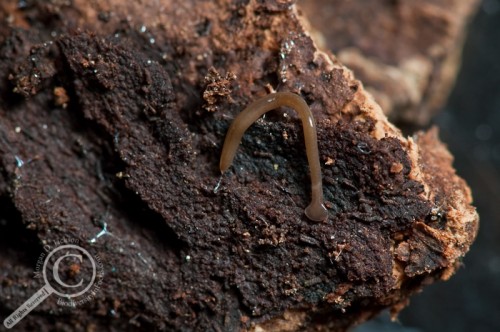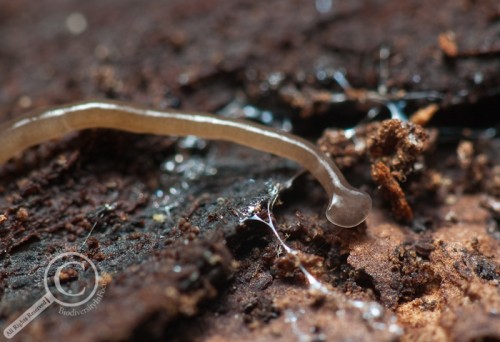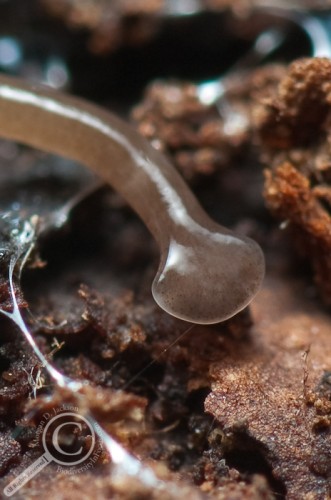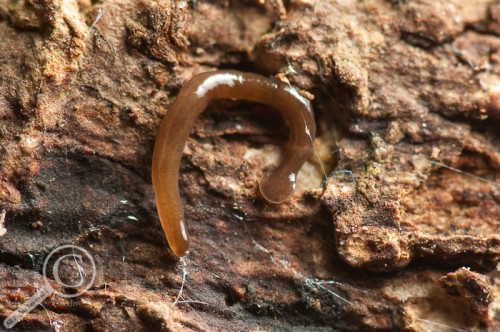This morning, undergraduate worker and entomologist-in-training Stephen Luk brought in a special little creature that he found in his backyard (click to enlarge):
Neat, but what is it you ask? It’s a hammerhead flatworm (Bipaliidae) which he found under some bark. Although I’m not 100% confident about what species it is, I’m fairly certain it is the introduced Bipalium adventitium. These little carnivores are predators of another introduced invertebrate, earthworms. Dindal (1970) reported that once Bipalium latches onto its prey, it sucks away with its pharynx (mouth-like structure) and liquefies large sections of the earthworms integument before ingesting its victim section by section.
This individual was about a 1.5 cm long and constantly on the move, making for a tricky photo shoot! The first image was taken with only the Nikon 105mm VR lens and SB-800 speedlight, but to gain some added magnification I shot the remaining images with extension tubes. Generally when I’m shooting macro subjects with limited depth of field, I strive to have the eyes in focus to allow the viewer to “connect” with the subject. But what about a creature that doesn’t have eyes in the traditional sense? Well, I went for what I believe are light-sensing sensilli (larger crop of above photo):
It took quite a few tries to get a good shot with the small depth of field provided by the extension tubes, but it was worth the effort to see such a special little invert up close and personal!
References: Dindal, D. L. 1970. Feeding Behavior of a Terrestrial Turbellarian Bipalium adventitium. American Midland Naturalist 83 (2): 635-637




I love these guys. My daughter and I found a similar flatworm crawling on a rotten log a few weeks ago. The way that they bob along just seems prehistoric. We decided that we should add it to the collection so we brought it in and read up on the best way to preserve them. It ends up that you have to narcotize them first to keep them from contracting. We used ethyl alcohol (not denatured) at very low concentration and slowly increased it.
What a neat little creature, I’ve never seen such a thing! Great find!
Wow, I’ve never even heard of these, much less seen one.
Nice shots.